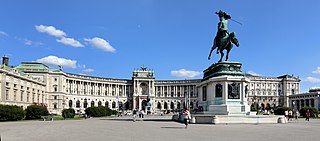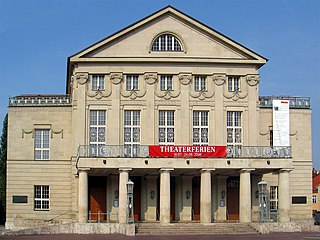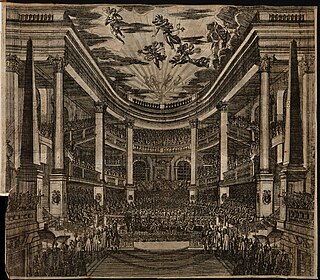German language regions
The first noble or royal court orchestras in German language regions, most of which were founded in the sixteenth century, were called Hofkapelle. When the noble and royal courts dissipated the name was often replaced by Staatskapelle ("State Chapel"), usually indicating an orchestra with a prior tradition as Hofkapelle.
Hofkapelle Dresden
As a musical institute the Dresden Hofkapelle originated in 1548. [4] It was a top European vocal and instrumental ensemble during the period the Saxon Electors also ruled Poland (1697-1763). [5] From 1708 the Court Chapel was housed in the former Opernhaus am Taschenberg, as a public church, until the construction of the new Hofkirche ("court church") was finished in 1751. [6]
Hofkapelle Mannheim
The Mannheim Palace Church was the Old Catholic court chapel for the prince-electors of the Electorate of the Palatinate between 1731 and 1777. Best known composer of the court chapel is Johann Stamitz, founder of the Mannheim school around 1750.
Münchner Hofkapelle
The Munich court chapel was arguably the most splendid one of the second half of the 16th century, and played an important role in the European music life of its day. Orlandus Lassus was the best known musician hired by the Bavarian dukes. [1]
The Hofkapelle München, an orchestra founded in 2009, is a private initiative referring to the previous fame of the Hofkapelle in that city. [7]
Hofkapelle Stuttgart
The Hofkapelle Stuttgart was the court chapel of the Württemberg dynasty in Germany. It existed in several formations since it was founded in the 16th century. In the early 19th century musicians like Conradin Kreutzer, Johann Nepomuk Hummel and Carl Maria von Weber were employed at the Hofkapelle. In 2002 a new ensemble, under the same name, was founded by Frieder Bernius.
Hofkapelle Weimar
With a history going back to 1482 notable musicians employed in the Hofkapelle include Johann Sebastian Bach in the early 18th century, and chapel masters such as Johann Nepomuk Hummel, Franz Liszt and Richard Strauss in the 19th century. The court chapel of Schloss Weimar where Bach worked was built in 1630. After a fire in 1774, the west wing of the palace, with the chapel, reopened in 1847.
After the first World War, the musical ensemble was renamed Staatkapelle, ultimately known as Deutsches Nationaltheater and Staatskapelle Weimar.
Hofburg chapel, Vienna

Following the collapse of the monarchy the Choir, part of the Hofkapelle, was disbanded in 1920. In 1924 the choir was reinstated as the Vienna Boys Choir and permanently settled in the Imperial Court Chapel, the Hofkapelle of the Hofburg Palace. The Hofburg Boys Choir was subsidised by the Royal Private School. After 1926, to consolidate the financial position of the Vienna Boys Choir, the Royal Court Chapel organised a wide range of singing engagements outside their own programme. The Choir remains in worldwide demand well into the 21st century. [8]
Other Hofkapelle buildings
- Hofkapelle of the Würzburg Residence










